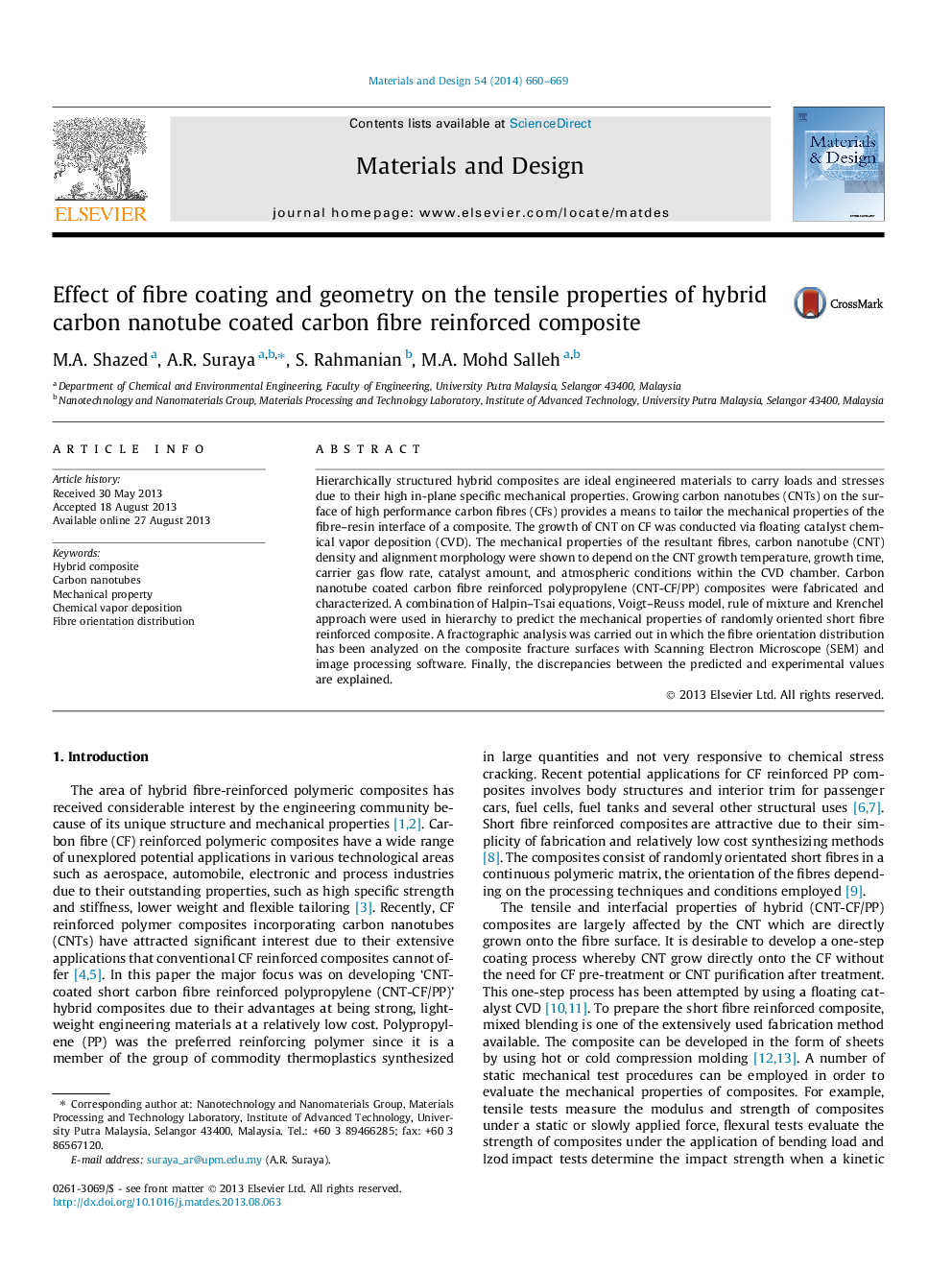| Article ID | Journal | Published Year | Pages | File Type |
|---|---|---|---|---|
| 829686 | Materials & Design (1980-2015) | 2014 | 10 Pages |
•Growth of CNT on carbon fibre (CF) was conducted via floating catalyst CVD process.•CNT-coated CF reinforced polypropylene composites were fabricated and characterized.•Theoretical prediction of composite tensile properties was conducted via mathematical approach.•Acceptable validation was found between experimental and estimated tensile properties.
Hierarchically structured hybrid composites are ideal engineered materials to carry loads and stresses due to their high in-plane specific mechanical properties. Growing carbon nanotubes (CNTs) on the surface of high performance carbon fibres (CFs) provides a means to tailor the mechanical properties of the fibre–resin interface of a composite. The growth of CNT on CF was conducted via floating catalyst chemical vapor deposition (CVD). The mechanical properties of the resultant fibres, carbon nanotube (CNT) density and alignment morphology were shown to depend on the CNT growth temperature, growth time, carrier gas flow rate, catalyst amount, and atmospheric conditions within the CVD chamber. Carbon nanotube coated carbon fibre reinforced polypropylene (CNT-CF/PP) composites were fabricated and characterized. A combination of Halpin–Tsai equations, Voigt–Reuss model, rule of mixture and Krenchel approach were used in hierarchy to predict the mechanical properties of randomly oriented short fibre reinforced composite. A fractographic analysis was carried out in which the fibre orientation distribution has been analyzed on the composite fracture surfaces with Scanning Electron Microscope (SEM) and image processing software. Finally, the discrepancies between the predicted and experimental values are explained.
